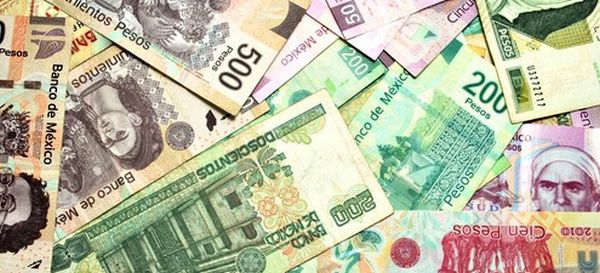Puerto Vallarta, Mexico - Following up on the Jalisco Counterfeiting Ring story we ran earlier this week, we thought it might be a good idea to tell you how to spot counterfeit Mexican banknotes. While researching the subject, we found the following informative article on Mexperience.com:
Spotting Counterfeit Mexican Banknotes
go to original
Like every country in the world, counterfeit banknotes circulate in Mexico. Notwithstanding the prospect of a twelve-year prison sentence for counterfeiting money, some people still chance their luck by printing rogue notes, and attempting to pass them off as genuine.
Trouble may arise if you innocently offer a counterfeit note for payment and have the bill checked, refused and possibly confiscated. Most stores and all exchange houses have ultra-violet light lamps installed to make an immediate check of the paper quick & simple.
Mexican banknotes carry a range of security features. Most are similar to those you see on banknotes issued world-wide, making it easier to spot a fake. The latest series of notes being issued by the Bank of Mexico include some state-of-art anti-counterfeiting measures, most notably, a holographic stripe on the note face, the image of which changes as the note is tilted.
Although credit and debit cards are widely accepted now, Mexico is still very much a cash-based economy, so even if you use your plastic extensively, there will be times when you will need to deal in cash. To help you avoid getting caught out by fake banknotes, here is a summary of Mexican banknotes and the main security futures you should become aware of when you are handling them:
Paper/Polymer: The two lowest-denominated banknotes, the $20 peso and $50 notes, are printed on polymer, a special type of plastic paper. All other notes are printed on banknote paper, which has the same crisp and distinct feel of genuine banknotes in all countries. Banknote paper is made using fibers instead of wood pulp and, unlike most commercially-available paper, it does not have any china clay or other chemical agents added to it, which is why banknotes donít fluoresce under the light of an ultra-violent lamp. When you're handling Mexican banknotes, be sure to feel the paper; it should feel the same as, for example, US or Canadian Dollars, British Pounds or Euro notes. If the note doesn't "feel" right, check for additional security features...
Watermark: All banknotes in Mexico have a "watermark". When you view the note through a back-light, the silhouette image should appear in an otherwise clear area of the note.
Threads: Banknote paper is molded, allowing security features like watermarks and threads to be added during the production process. Older style $100, $200, $500 and $1000 peso notes have two threads running through them; one is a solid thread, the other is a translucent thread, with the value of the note printed upon it in words; for example, the $100 peso note's translucent thread reads "cien" and the $500 peso note's translucent thread reads "quinientos."
Printing: Banks employ a special printing process when they create their bills which presses the imagery onto the note; this process gives the printing a "raised" feel that is especially noticeable on new paper. In any state of wear, the printing on the note should be crisp, clear and never blurred; with definitive lines and consistent coloring.
New-Style Notes: The Bank of Mexico has recently completed the process of re-issuing all of its banknotes. The $20 and $50 peso polymer notes are now in wide circulation and the old paper versions of these are no longer seen. In 2008, the bank issued its latest style of $1000 peso and $200 peso banknotes. With the introduction afterwards of the latest style $100 and $500 peso banknotes, the current series was complete.
New-style banknotes have a contemporary look in comparison to the older versions and contain a number of high-tech, state-of-the-art security features. The principal and most immediately visible security feature on the new-style $100, $200, $500 and $1000 peso banknotes is a distinctive holographic optical thread on the front (face) side of each bill. The thread is quite wide and as you tilt the note the image on the thread changes.
Original Story


